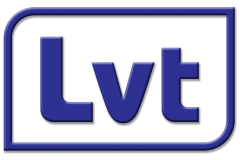IEC 61000-6-2 / IEC 61000-6-4 Standard
ELECTROMAGNETIC COMPATIBILITY (EMC) - GENERIC STANDARDS - IMMUNITY AND EMISSION STANDARDS FOR INDUSTRIAL ENVIRONMENTS
IEC 61000-6-2 and IEC 61000-6-4 standards are among the electromagnetic compatibility (EMC) product standards. Part 2 (61000-6-2) of the IEC 61000 standard for industrial environments is about EMC immunity tests (EMC Test) and Part 4 (61000-6-4) EMC emission tests (EMC Test).
IEC 61000-6-2 and IEC 61000-6-4 standards cover general Electromagnetic Compatibility (EMC) features for a device or industrial environments that are allocated as a power source to a structure that feeds manufacturing facilities or factories. This standard also covers devices that are battery powered and intended for use in industrial environments.
The purpose of IEC 61000-6-2 and IEC 61000-6-4 standards are permanent and temporary electromagnetic compatibility (EMC) general features and tests for associated devices (EMC Test), including Electrostatic Discharge Test (ESD) for industrial environments. ) to indicate.
Electromagnetic Compatibility (EMC) Tests:
Electromagnetic Compatibility Tests (EMC Test) are aimed to operate any electrical and electronic device or system without being affected by and affecting other devices or systems in the environment. EMC Tests are examined in 2 general categories as immunity and emission.
Emission Tests specified in IEC 61000-6-4;
- Radiated Emission Test - CISPR 11 / EN 55011
- Conducted Emission Test - CISPR 11 / EN 55011
- Harmonics Test - EN 61000-3-2
- Flicker Test - EN 61000-3-3
Immunity Tests specified in IEC 61000-6-2;
- Electrostatic Discharge (ESD) Test - EN 61000-4-2
- Radiated Immunity Test - EN 61000-4-3
- Electrical Fast Transients / Burst Test - EN 61000-4-4
- Surge Testi - EN 61000-4-5
- Conducted Immunity Test - EN 61000-4-6
- Voltage Dips and Interruptions Test - EN 61000-4-11
Immunity Test Specifications
Enclosure Ports;
|
EMC Test |
Test Specifications |
Performance Criterion |
|
ESD IEC 61000-4-2 |
Contact: ±4 kV Air: ±8 kV |
B |
|
Radiated Immunity IEC 61000-4-3 |
10 V/m 80 MHz – 1 GHz 3 V/m 1,4 GHz – 6 GHz %80 AM – 1 kHz |
A |
|
Magnetic Fields IEC 61000-4-8 |
30 A/m 50-60 Hz
|
A |
AC Power Ports;
|
EMC Test |
Test Specifications |
Performance Criterion |
|
|
Burst IEC 61000-4-4 |
±2 kV 5 kHz or 100 kHz
|
B |
|
|
Surge IEC 61000-4-5 |
±1 kV Line to Line ±2 kV Line to Ground |
B |
|
|
Conducted Immunity IEC 61000-4-6 |
10 V/m 0,15 MHz – 80 MHz %80 AM – 1 kHz |
A |
|
|
Voltage dips - Interruptions IEC 61000-4-11 |
%0 UT=1 cycle %40 UT=10/12 cycle %70 UT=25/30 cycle |
%0 UT=250 cycle |
B-C |
|
|
|
|
|
DC Power Ports;
|
EMC Test |
Test Specifications |
Performance Criterion |
|
Burst IEC 61000-4-4 |
±1 kV 5 kHz or100 kHz |
B |
|
Surge IEC 61000-4-5 |
±0,5 kV Line to Line ±1 kV Line to Ground |
B |
|
Conducted Immunity IEC 61000-4-6 |
10 V/m 0,15 MHz – 80 MHz %80 AM – 1 kHz |
A |
Performance criteria
Performance criterion A: During and after the test the EUT shall continue to operate as intended without operator intervention. No degradation of performance or loss of function is allowed below a minimum performance level specified by the manufacturer when the EUT is used as intended. The performance level may be replaced by a permissible loss of performance. If the minimum performance level or the permissible performance loss is not specified by the manufacturer, then either of these may be derived from the product description and documentation, and by what the user may reasonably expect from the EUT if used as intended.
Performance criterion B: After the test, the EUT shall continue to operate as intended without operator intervention. No degradation of performance or loss of function is allowed, after the application of the phenomena below a performance level specified by the manufacturer, when the EUT is used as intended. The performance level may be replaced by a permissible loss of performance. During the test, degradation of performance is allowed. However, no change of operating state or stored data is allowed to persist after the test. If the minimum performance level (or the permissible performance loss) is not specified by the manufacturer, then either of these may be derived from the product description and documentation, and by what the user may reasonably expect from the EUT if used as intended.
Performance criterion C: During and after testing, a temporary loss of function is allowed, provided the function is selfrecoverable, or can be restored by the operation of the controls or cycling of the power to the EUT by the user in accordance with the manufacturer’s instructions.

